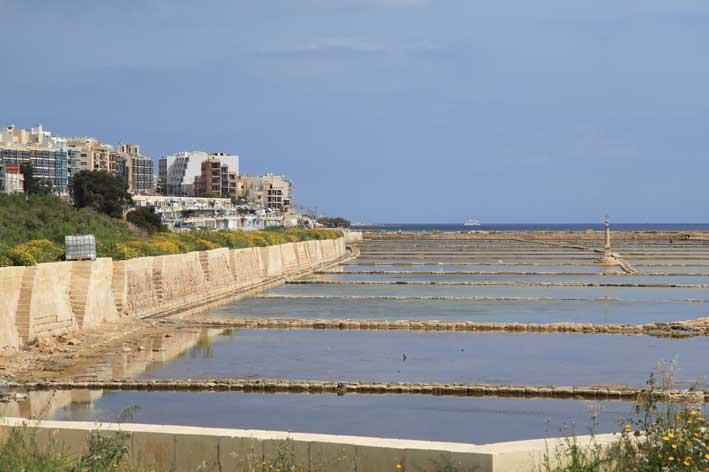The Salini salt pans between the Coast Road and Kennedy Grove will once again be used to produce salt.
The possibility was first hinted at by Minister for Infrastructure, Joe Mizzi in answer to a number of Parliamentary Questions and confirmed by Minister for the Environment, Jose Herrera.
When asked by The Malta Independent whether there were any plans for the salt pans to be used for salt production once again, despite mentioning salt production in Parliament, Mr Mizzi wouldn’t confirm anything as he said that the future of the site is in the hands of the Ministry for the Environment. “The Ministry for Infrastructure is solely focused on finishing the project,” Mr Mizzi said.
Mr Mizzi said the Salini regeneration project is in its final stages before being finished and transferred to the remit of the Ministry for the Environment; this in light of the fact that the project, which is co-funded by the EU, was meant to be completed by December 2013.
This newsroom asked Mr Mizzi whether any EU funds were lost due to overshooting the deadline, but he was unsure saying that, as far as he knows, there was no loss of funds. The delay was explained off by Mr Mizzi as inevitable due to all the problems which the Ministry inherited from the previous PN Administration.
Profit will help fund the project- Herrera
This newsroom then spoke to Dr Herrera who confirmed that salt production is indeed on the agenda for the Salina salt pans. “Currently there are ongoing negotiations with Joe Mizzi, with the office of the Prime Minister and departments responsible for EU funds, which fall under Ian Borg’s remit.”
The profit from the salt production will be used to help run the project itself, Dr Herrera said. He also “can’t exclude that the running of the site will be transferred to a third party, most probably an NGO.” He then spoke about partnerships with NGOs to collaboratively run a number of projects and sites. Apart from salt production, the Minister also spoke of attracting a number of birds and other animals which used to nest in the area regularly before it became derelict.

This newsroom asked specifically whether the production will fall under the public or the private sector. “When one gives a concession to a particular NGO, it doesn’t mean that the government abdicates its right to survey what’s going on. It also doesn’t mean that the government can’t give some kind of subvention.” All this as long as EU regulations are adhered to, concluded Dr Herrera.
The Minister said that the government does not have the workforce to maintain every single natural site, so there needs to be full partnership with NGOs to ensure that these sites are well-kept and preserved accordingly
This newsroom asked the same question regarding EU funding which it asked Minister Mizzi regarding the loss of EU funding due to tardiness. After a quick side-glance at his communications coordinator, Dr Herrera echoed Mr Mizzi’s answer that, as far as he knows, no funds were lost.
€7m original investment
Work on the historic salt pans in the Salini area, which date back to the Knights of St John, originally started in August 2012 with a total investment €7 million financed by the EU. Salt production in the area was halted in September 2003 after a storm which led to contamination of the site.
The salt pans were constructed by the Knights of St John in the sixteenth century to have an adequate stock of salt, which was used in large quantities to preserve food. The design of these salt pans resembles a large dock.
The design is such that sea water is mechanically allowed to go through the outer wall next to the open sea. From then on the water is channelled from one partition to another, increasing the salt concentration in the process until all the water has evaporated and salt can be collected manually.